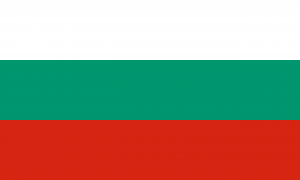Language/Bulgarian/Culture/Traditional-Bulgarian-Music
 Հայերէն
Հայերէն 官话
官话 官話
官話 Hrvatski jezik
Hrvatski jezik Český jazyk
Český jazyk Nederlands
Nederlands English
English Suomen kieli
Suomen kieli Français
Français Deutsch
Deutsch עברית
עברית हिन्दी
हिन्दी Magyar
Magyar Bahasa Indonesia
Bahasa Indonesia فارسی
فارسی Italiano
Italiano 日本語
日本語 Қазақ тілі
Қазақ тілі 한국어
한국어 Lietuvių kalba
Lietuvių kalba Νέα Ελληνικά
Νέα Ελληνικά Şimali Azərbaycanlılar
Şimali Azərbaycanlılar Język polski
Język polski Português
Português Limba Română
Limba Română Русский язык
Русский язык Српски
Српски Español
Español العربية القياسية
العربية القياسية Svenska
Svenska Wikang Tagalog
Wikang Tagalog தமிழ்
தமிழ் ภาษาไทย
ภาษาไทย Türkçe
Türkçe Українська мова
Українська мова Urdu
Urdu Tiếng Việt
Tiếng ViệtBulgarian music is known for its unique rhythms, distinctive vocal styles, and use of traditional instruments. Traditional Bulgarian music has its roots in ancient pagan rituals and folklore, and has evolved into a rich tapestry of melodies and rhythms that reflect the country's diverse regions and cultural influences.
Characteristics of Traditional Bulgarian Music
Traditional Bulgarian music is characterized by its use of complex rhythms and distinctive tonal structures. The music incorporates elements of both Eastern and Western traditions, and is often performed in large groups, with up to several dozen performers. The most common instruments used in traditional Bulgarian music include:
- Gadulka – a traditional bowed string instrument with three or four strings, similar to a violin or cello
- Kaval – a wooden flute typically made from elderberry wood
- Tambura – a long-necked lute with four or five strings, similar to a mandolin or bouzouki
- Gaida – a type of bagpipe with a distinctive drone sound
Traditional Bulgarian music also features unique vocal styles, with many songs featuring intricate harmonies and dissonant intervals. Songs often tell stories of love, war, and political struggles, and are typically performed at weddings, festivals, and other celebrations.
Rhythms
One of the most distinctive features of Bulgarian music is its use of complex rhythms, which often involve irregular time signatures and syncopated beats. Traditional Bulgarian music is known for its use of asymmetrical meters, including 7/8, 9/8, and 11/8. These rhythms create a distinctive sense of propulsion and energy, and are often accompanied by intricate dance movements.
Notable Musicians
Bulgaria has a rich history of traditional musicians, many of whom have gained international recognition for their innovative techniques and unique interpretations of traditional melodies. Some of the most notable Bulgarian musicians include:
- The Bulgarian State Television Female Vocal Choir, also known as the Mystery of Bulgarian Voices, which gained international acclaim in the 1980s for their haunting harmonies and unique vocal techniques.
- Ivo Papasov, who is known for his virtuosic performances on the clarinet and for his innovative fusion of traditional Bulgarian music with jazz and other genres.
- Kaval player Theodosii Spassov, who has gained international recognition for his virtuosic performances and innovative use of electronic effects.
Table of Common Instruments
| Bulgarian | Pronunciation | English Translation |
|---|---|---|
| Гъдулка (Gadulka) | gah-DOOL-kah | Bowed string instrument |
| Тамбура (Tambura) | TAM-boo-rah | Long-necked lute |
| Кавал (Kaval) | kah-VAHL | Wooden flute |
| Гайда (Gaida) | GUY-dah | Bagpipe |
Conclusion
Traditional Bulgarian music is an important part of the country's cultural heritage, and reflects the traditions of its people throughout history. By exploring the unique rhythms, instruments, and vocal styles of traditional Bulgarian music, learners can gain an appreciation for the diversity and richness of Bulgarian culture.
Sources
Related Lessons
- At the restaurant
- Puppet Theatre
- Bulgarian Folklore
- Dance
- Bulgarian Cinema
- Bulgaria Timeline
- Bulgarian Theatre
- Every Day Life in Bulgaria
- Bulgarian Pop Music

